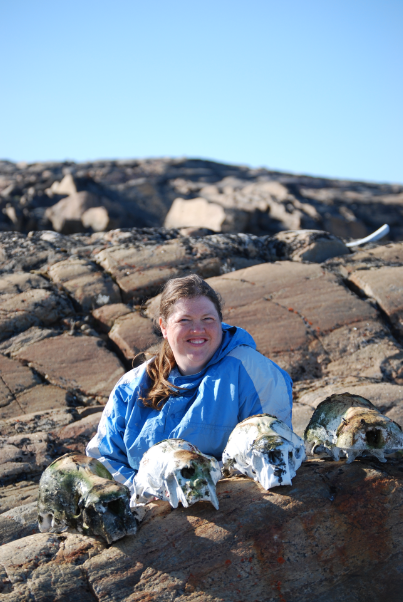
Faculty Director, STEM at American Public University
Everyone’s favorite adventurer and archaeologist, Indiana Jones, is coming back to the silver screen! Have you ever wondered what it might take to become a real archaeologist? wSTEM founder Francesca Catalano sat down with Dr. Christyann Darwent to find out.
Darwent, what is your professional background?
I have a PhD in Anthropology from the University of Missouri-Columbia (2001), a Masters in Archaeology from Simon Fraser University (1995), and a Bachelor of Science in Archaeology from the University of Calgary (1992). My primary field of research is zooarchaeology, or the study of animal remains from archaeological sites in order to understand past environments and what people ate. I also conduct field research in the Arctic, most recently in Greenland and Alaska. I really enjoy my area of research because it brings together my interest in biology and ecology with my interest human behavior. I am currently an Associate Professor in the Department of Anthropology at the University of California, Davis, and also Editor of the journal Arctic Anthropology.
What was your career path like?
Ever since I was about 12 years old I have wanted to be an archaeologist. My Gran had these amazing books in her Vancouver apartment about Ankor, ancient Japan, Tut’s tomb, and the Arctic. My favorite subjects were Social Studies and Biology. I started university immediately after I finished High School, and the summer of my second year I enrolled in field school. After field school I volunteered as a docent at Fort Calgary, and was lucky enough to be hired for the last month of summer. I continued to help with instruction of K-6 programs at the Fort for the next year, and then spent the next summer working as one of the public education instructors with the field school; this lead to a paid student lab assistant position cataloging artifacts, and to work with the Head-Smashed-In Buffalo Jump lab identifying faunal remains. After taking a graduate level course on zooarchaeology I was hired to analyze a faunal collection from the Canadian Arctic, had the opportunity to work in the field at Head-Smashed-In for two summers, and in 1992 (the year I graduated) was hired as a field assistant on the Little Cornwallis Island project in the Canadian Arctic. Fieldwork in the Arctic is not easy, the weather is harsh, but it is the most beautiful place I have ever seen. I have conducted research in the Arctic ever since.
What advice would you give to a younger you?
Looking back, I don’t regret any of the paths my career took. There were points when I was extremely poor and rolling coins to pay rent, living in really scary neighborhood. But all of these experiences form who I am today.
Are you involved in any service or outreach?
I am currently editor of the journal Arctic Anthropology, which publishes current academic research in the North. However, I have been involved in educational outreach since I was an undergraduate. During my Masters and PhD I taught K-12 groups at the Archaeology and Anthropology museums about Human Evolution and archaeology in North America. When I was hired at UC Davis I became involved with our Anthropology Museum as well as interacting with other museum/research collections on campus to host public events for Picnic Day, Archaeology Month and Museum Day. I have also gone to local schools to talk about animal skeletons, arctic ecology, archaeology, and careers in science. Although an R1 university does not give faculty credit for outreach activities, I believe it is essential for continued public support of science and social science research to educate the next generation. In addition, I am very involved in taking university students on as interns in my lab to help prepare animals skeletons and to process artifacts when they come back from the field.
What is the next thing you want to pursue?
I have just wrapped up nearly four years of work collaborating with colleagues in Vet Genetics on arctic dog DNA. Although I find this work fascinating, it is not as fulfilling as going to the arctic and excavating. My husband (who is also an archaeologist) and I have spent the past two summers in the village of Shaktoolik, Alaska. We want to turn this into a long-term project and continue to work collaboratively with the Native Corporation, local students and elders to record their oral history and use archaeology to enhance the limited written record of Norton Sound. We currently have an interactive community Facebook page: http://www.facebook.com/groups/shaktoolikarchaeology/
Anything else you would like to share? Balance is important in any career, but often academics in STEM feel they have to sacrifice family for their research. I have two sons born during my PhD and while pre-tenure. You can make it work.
You can follow Dr. Christyann Darwent on Twitter as Arctic Archaeology @cmdarwent
Comments are closed.